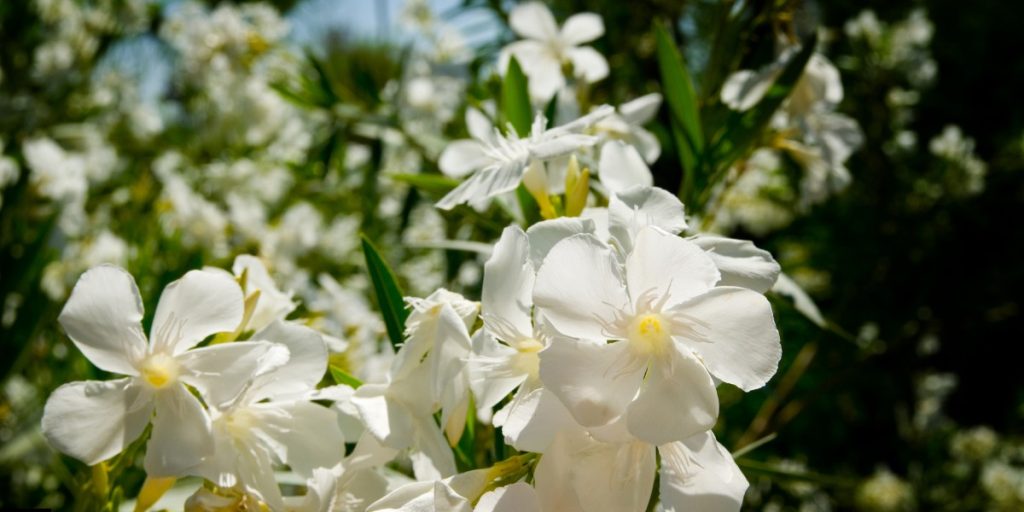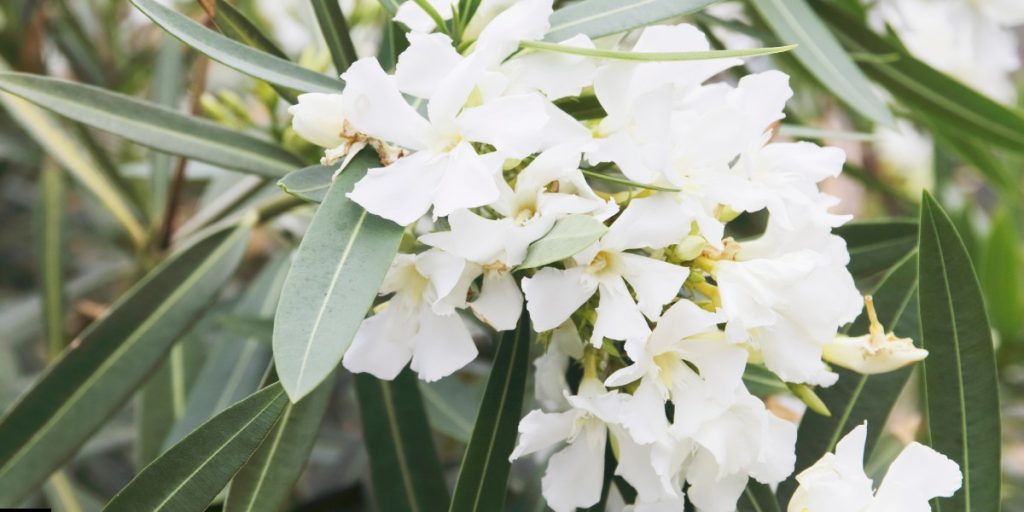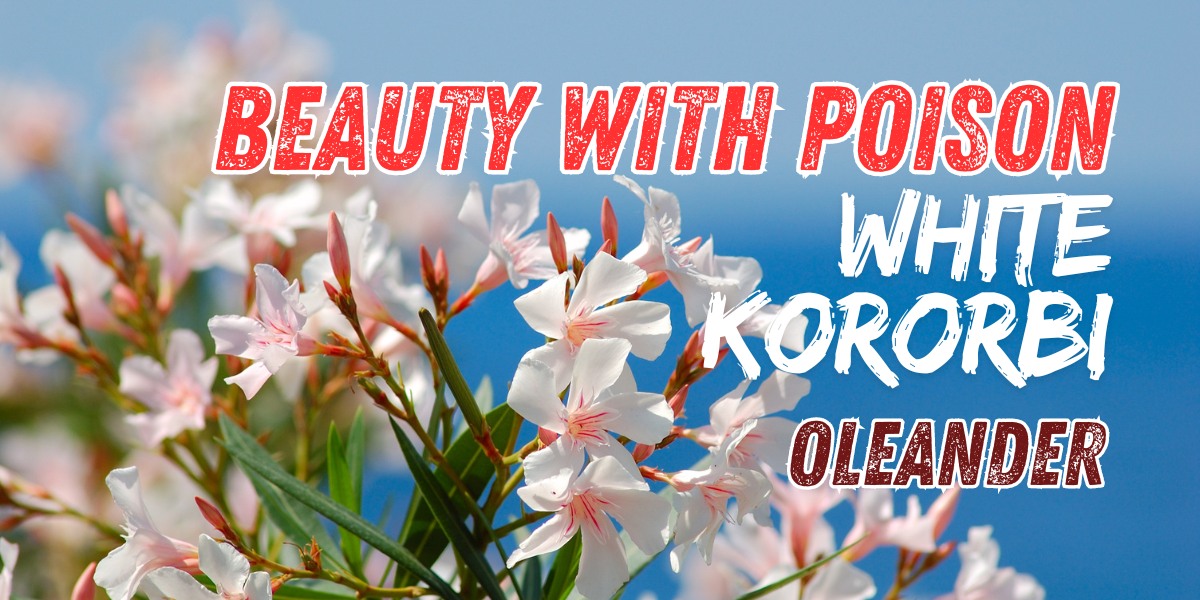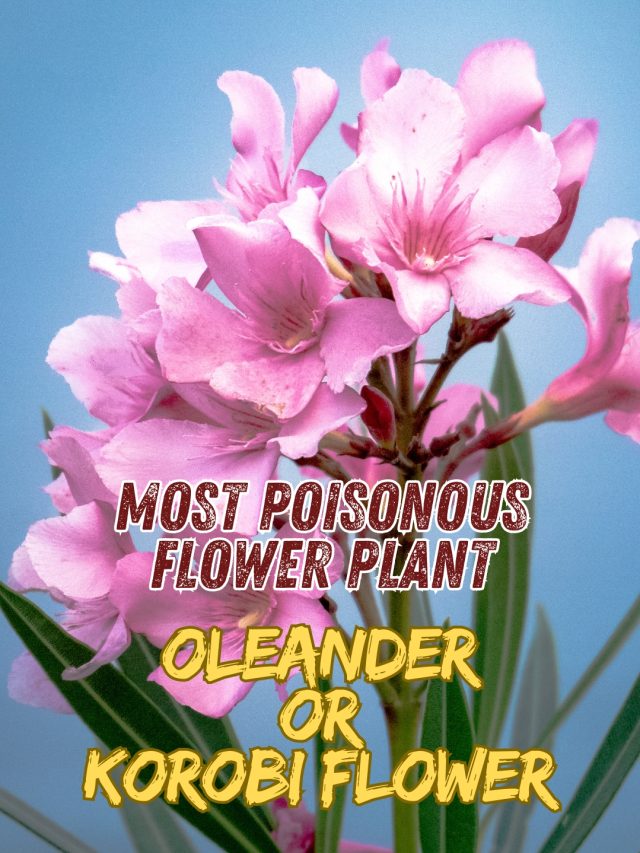The White Korobi Flower, Scientifically known as Nerium oleander, is a striking flower that brings a sense of elegance and purity to gardens. With its lovely white blooms and hardy nature, it’s a favorite among many flower lovers and gardeners.
What Does It Look Like?
- Scientific Name: Nerium oleander
- Common Names: White Korobi, Oleander
- Family: Apocynaceae
- Origin: Mediterranean region and parts of Asia

The White Korobi is a bushy plant that can grow between 6 to 12 feet tall. Its leaves are long, narrow, and dark green, which makes its white flowers stand out even more. The flowers have five petals, forming a lovely star shape, and they give off a light, sweet smell. It Comes with different types of colour varieties, If you want to know more about them then click the link bellow.
How to Grow White Korobi Flower:
White Korobi is a tough plant that can grow in many different conditions:
- Soil: It likes well-drained sandy or loamy soil. Make sure the soil doesn’t hold too much water to prevent root rot.
- Sunlight: The plant needs full sun but can also grow in partial shade. It blooms best when it gets plenty of sunlight.
- Watering: Water the plant regularly, especially during dry spells. However, once it’s established, it can handle drought pretty well.
- Temperature: White Korobi prefers warm weather but can survive mild frost. It’s best grown in areas where the temperature doesn’t drop too low.

Caring for Your White Korobi Flower
- Pruning: Trim the plant regularly to keep it in shape and help it produce more flowers. Pruning also removes dead or diseased branches, which can improve the plant’s health.
- Fertilizing: Use a balanced fertilizer during the growing season for best results. This helps the plant grow strong and produce more flowers.
- Pest Control: Watch out for pests like aphids and scale insects. If you see pests, treat the plant with insecticidal soap or another safe pest control method.
Cultural Significances:
In many cultures, the White Korobi symbolizes beauty and purity. Its elegant flowers are often used in flower arrangements and have a special place in traditional ceremonies and gardens. People love them not only for their looks but also for the peaceful and pure feelings they evoke.

Disadvantages:
While the White Korobi is beautiful, all parts of the plant are toxic if eaten. This includes the leaves, flowers, and even the sap. Make sure to plant it where pets and small children can’t reach it. If ingested, it can cause serious health problems. To know more about the poison and result click the Korobi flower blog post.
Interesting Facts:
- Versatile Use: White Korobi is often used in landscaping for its beauty and low maintenance. It’s great for hedges, borders, and as a standalone feature.
- Air Pollution Tolerance: This plant can tolerate air pollution, making it a good choice for urban gardens.
- Long Blooming Season: The White Korobi can bloom from spring through fall, providing a long season of beautiful flowers.

Conclusion:
The White Korobi flower is a wonderful addition to any garden, combining beauty and toughness. With its striking white flowers and easy care, it’s no surprise that this plant is popular with gardeners all around the world. Whether you’re an experienced gardener or a beginner, the White Korobi is a great choice for adding elegance to your outdoor space.
-
What is the White Korobi flower called in English?
The White Korobi flower is called “White Oleander” in English.
-
Is White Oleander poisonous?
Yes, White Oleander is highly poisonous. All parts of the plant, including the leaves, flowers, and sap, are toxic if ingested. It can cause serious health problems, so it should be kept out of reach of pets and children.
-
What does the White Oleander symbolize?
The White Oleander symbolizes beauty and purity. Despite its toxic nature, it is admired for its elegant and delicate flowers, which evoke feelings of peace and purity.



2 thoughts on “Poisonous Beauty the White Korobi Flower”